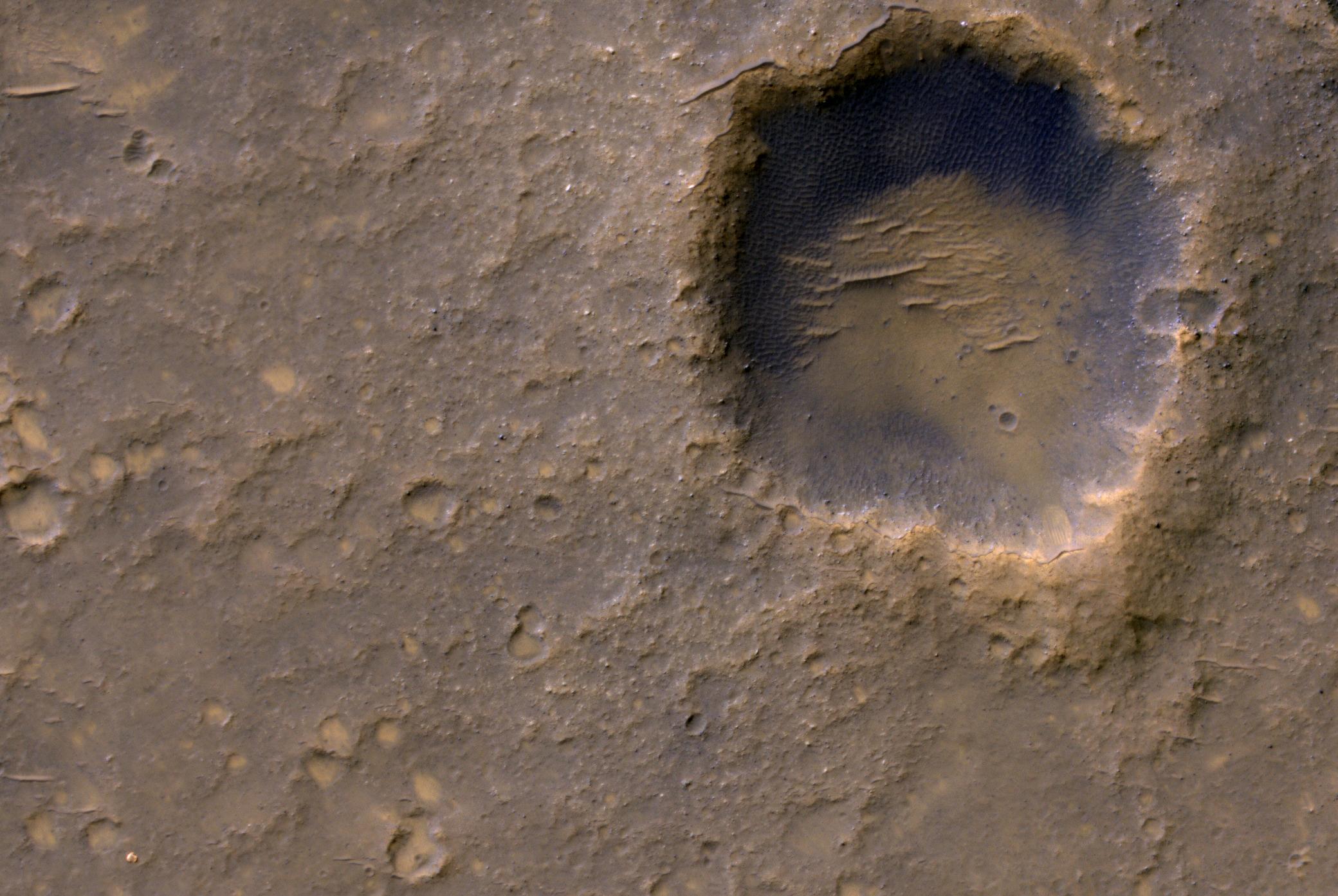Bonneville (crater) on:
[Wikipedia]
[Google]
[Amazon]
 Bonneville is an
Bonneville is an
Official Mars Rovers site
* Impact craters on Mars Aeolis quadrangle {{Mars-stub
 Bonneville is an
Bonneville is an impact crater
An impact crater is a circular depression in the surface of a solid astronomical object formed by the hypervelocity impact of a smaller object. In contrast to volcanic craters, which result from explosion or internal collapse, impact crater ...
on Mars
Mars is the fourth planet from the Sun and the second-smallest planet in the Solar System, only being larger than Mercury. In the English language, Mars is named for the Roman god of war. Mars is a terrestrial planet with a thin at ...
. It is located within the much larger crater Gusev. Bonneville was visited by the Mars Exploration Rover ''Spirit'' in 2004, during its exploration of the floor of Gusev. Bonneville is also the final resting place of ''Spirit''s heat shield, jettisoned during the landing procedure; the heat-shield could be seen glinting on the opposite wall when ''Spirit'' photographed the crater. The crater is 210 metres in diameter, 14 meters deep and its rim rises 6.4 metres above the surrounding terrain.
Bonneville is named after Benjamin Bonneville and Lake Bonneville
Lake Bonneville was the largest Late Pleistocene paleolake in the Great Basin of western North America. It was a pluvial lake that formed in response to an increase in precipitation and a decrease in evaporation as a result of cooler temperature ...
, an ancient lake in Utah
Utah ( , ) is a state in the Mountain West subregion of the Western United States. Utah is a landlocked U.S. state bordered to its east by Colorado, to its northeast by Wyoming, to its north by Idaho, to its south by Arizona, and to it ...
.
Formation and geology
The strata into which Bonneville formed is thought to be loose debris, although some of the ejecta may have originated from more competent rocks. No underlying bedrock was exposed in the crater or the numerous craterlets in Bonneville's walls. The crater is relatively pristine and in particular has not been affected by water based erosion. It is likely that Bonneville is asecondary crater
Secondary craters are impact craters formed by the ejecta that was thrown out of a larger crater. They sometimes form radial crater chains. In addition, secondary craters are often seen as clusters or rays surrounding primary craters. The study of ...
, given its low depth to diameter ratio.
References
External links
Official Mars Rovers site
* Impact craters on Mars Aeolis quadrangle {{Mars-stub